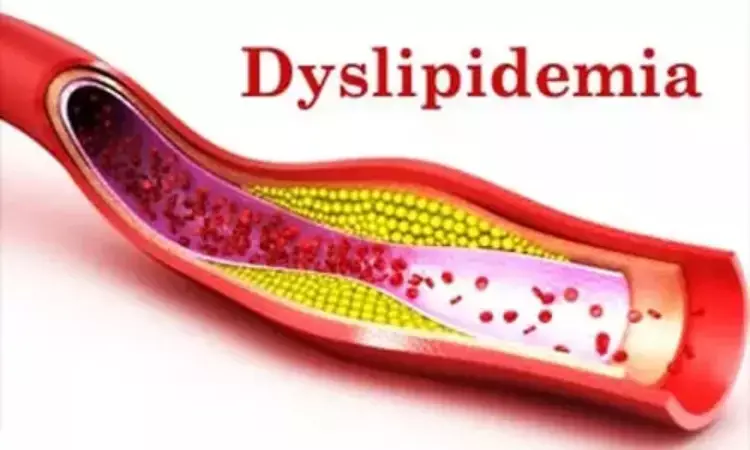- Home
- Medical news & Guidelines
- Anesthesiology
- Cardiology and CTVS
- Critical Care
- Dentistry
- Dermatology
- Diabetes and Endocrinology
- ENT
- Gastroenterology
- Medicine
- Nephrology
- Neurology
- Obstretics-Gynaecology
- Oncology
- Ophthalmology
- Orthopaedics
- Pediatrics-Neonatology
- Psychiatry
- Pulmonology
- Radiology
- Surgery
- Urology
- Laboratory Medicine
- Diet
- Nursing
- Paramedical
- Physiotherapy
- Health news
- Fact Check
- Bone Health Fact Check
- Brain Health Fact Check
- Cancer Related Fact Check
- Child Care Fact Check
- Dental and oral health fact check
- Diabetes and metabolic health fact check
- Diet and Nutrition Fact Check
- Eye and ENT Care Fact Check
- Fitness fact check
- Gut health fact check
- Heart health fact check
- Kidney health fact check
- Medical education fact check
- Men's health fact check
- Respiratory fact check
- Skin and hair care fact check
- Vaccine and Immunization fact check
- Women's health fact check
- AYUSH
- State News
- Andaman and Nicobar Islands
- Andhra Pradesh
- Arunachal Pradesh
- Assam
- Bihar
- Chandigarh
- Chattisgarh
- Dadra and Nagar Haveli
- Daman and Diu
- Delhi
- Goa
- Gujarat
- Haryana
- Himachal Pradesh
- Jammu & Kashmir
- Jharkhand
- Karnataka
- Kerala
- Ladakh
- Lakshadweep
- Madhya Pradesh
- Maharashtra
- Manipur
- Meghalaya
- Mizoram
- Nagaland
- Odisha
- Puducherry
- Punjab
- Rajasthan
- Sikkim
- Tamil Nadu
- Telangana
- Tripura
- Uttar Pradesh
- Uttrakhand
- West Bengal
- Medical Education
- Industry
Study Links ANGPTL 3 and 4 Proteins to Dyslipidemia in Type 2 Diabetes

Dyslipidemia, marked by abnormal cholesterol and triglyceride levels, remains a major health risk in developing countries and is worsened by poor glycemic control in T2DM. Researchers at the Kalinga Institute of Medical Sciences found in a case controlled study that angiopoietin-like proteins 3 and 4 (ANGPTL 3 and 4) are associated with dyslipidemia in patients with type 2 diabetes mellitus (T2DM).
Managing atherogenic lipid levels is therefore crucial to reducing the risk of complications. ANGPTL3 and ANGPTL4 are proteins known to regulate lipid metabolism by inhibiting lipoprotein lipase, an enzyme responsible for breaking down triglyceride-rich lipoproteins.
To investigate the role of these proteins, this study enrolled 61 T2DM patients aged 25 to 65 and 27 age-matched healthy controls. This research measured a wide range of biomarkers, including fasting blood sugar (FBS), postprandial blood sugar (PPBS), glycated hemoglobin (HbA1C) along with serum lipid parameters such as total cholesterol (TC), triglycerides (TG), low-density lipoprotein (LDL), very low-density lipoprotein (VLDL), high-density lipoprotein (HDL), and the TC/HDL ratio. They also assessed serum insulin, free fatty acids (FFA), and the levels of ANGPTL3 and ANGPTL4.
The key findings from the study revealed that both ANGPTL3 and ANGPTL4 levels were significantly decreased in T2DM patients when compared to healthy individuals, with ANGPTL4 showing a more pronounced decline (P < 0.001) compared to ANGPTL3 (P < 0.05). Furthermore, ANGPTL4 levels were negatively correlated with PPBS (P = 0.03), HbA1C (P = 0.05), and insulin resistance (IR) (P = 0.04), indicating that lower ANGPTL4 levels could be linked to poorer glycemic control.
While ANGPTL3 did not show a direct correlation with glycemic parameters, it was significantly associated with lipid abnormalities, notably LDL levels (P = 0.03) and the TC/HDL ratio (P = 0.02). Also, both ANGPTL3 and ANGPTL4 showed strong associations with free fatty acids (FFA), with P-values of 0.001 and 0.03, respectively.
Overall, the detailed analysis presented in the study shows that while ANGPTL3 is more closely tied to lipid abnormalities, ANGPTL4 seems to bridge the gap between lipid dysregulation and glycemic control in T2DM patients.
Source:
Swarnakar, R., Sahu, D., Bahinipati, J., Pradhan, T., Meher, D., Sarangi, R., & Mahapatra, S. (2025). The significance of ANGPTL3 and ANGPTL4 proteins in the development of dyslipidemia in Type 2 diabetes mellitus. Journal of Family Medicine and Primary Care, 14(3), 947–953. https://doi.org/10.4103/jfmpc.jfmpc_1256_24
Neuroscience Masters graduate
Jacinthlyn Sylvia, a Neuroscience Master's graduate from Chennai has worked extensively in deciphering the neurobiology of cognition and motor control in aging. She also has spread-out exposure to Neurosurgery from her Bachelor’s. She is currently involved in active Neuro-Oncology research. She is an upcoming neuroscientist with a fiery passion for writing. Her news cover at Medical Dialogues feature recent discoveries and updates from the healthcare and biomedical research fields. She can be reached at editorial@medicaldialogues.in
Dr Kamal Kant Kohli-MBBS, DTCD- a chest specialist with more than 30 years of practice and a flair for writing clinical articles, Dr Kamal Kant Kohli joined Medical Dialogues as a Chief Editor of Medical News. Besides writing articles, as an editor, he proofreads and verifies all the medical content published on Medical Dialogues including those coming from journals, studies,medical conferences,guidelines etc. Email: drkohli@medicaldialogues.in. Contact no. 011-43720751


